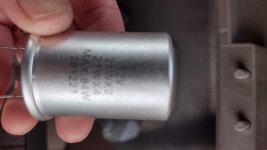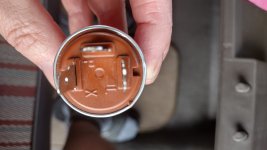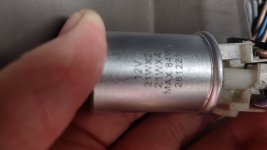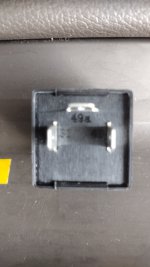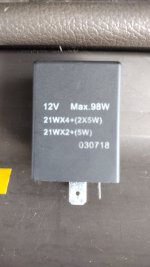Sorry , i struggle being around during the week , I work some pretty strange work patterns , with very long hours . I'm a trucker by trade , and work for an agency , so my hours can be pretty indifferent . Certainly not the regular 9 to 5 of many !should I be removing the whole dashboard to get a look.
This is the reason , i'm not around for long periods on the forum , and why i missed your original posting .
Now , i would strongly advise against that move at this time . They can be extremely difficult to refit , seldom actually refitting properly . Also with a dash of this age , they can become brittle , and that increases the risk of damage . I would class a dash removal as last chance saloon , when everything else has failed , so lets not think of going there , just yet .
What i would suggest , is looking for ways of getting better access though .
I think you will need to remove the steering shroud , so access can be gained to the multi-function switch behind the steering wheel . But here again be careful , it can also be brittle . It should be secured by cross headed screws from underneath , somewhere between 4 and 6 . The bottom half should remove fairly easily , but be careful with the top . Take a good look inside before you do remove the top , as you maybe able to reach what you need without removing . The tops are very nearly always difficult to remove . You will need access to the left hand stalk , and connections , plus any plugs that are hidden within .
Just as a point in fact here . On my van , the series 2 dash is in two halves . The main part or upper part is one piece and stretches right across the van . However , as i mentioned in an earlier post , it's also an A class motorhome , which is actually wider than the original van by a good 600mm . The result of which , is the dash doesn't reach from one side to the other , and should enable a complete removal relatively easy , compared to that of a standard van (In a standard van , even the width of the van itself can work against you) . Even so i've left my dash in place , and removed the lower panels instead . Now basically these are moulded in two half sections making them much easier to handle , but even this can be risky . I have already noted damage to some of the mountings , from previous removals by previous owners . However this has allowed access to the parts i need , and this is what i would advise you look for .
What i do need to know though is what type of van this is , just so i know what i'm dealing with . I get the feeling it's a straight forward standard van , is this correct or is it a converted camper ? . And if it has been converted , is it a professional or amateur conversion ? . This can mean the wiring has been mucked around with , in the past , but then a standard van probably not !
Another thing i would advise , is you to source a good quality tester . It looks like we are gonna have to do a little prodding here , and the solid tip of a proper tester will be a great aid . It may even save taking bits apart , and so lighten the work load . I still feel your problem is behind the dash and plugs will need to be tested . This could be done without separating , quite often while still in place . All part of the being gentle approach .
Now at the head of my last post , i posted an urgent warning . You have not mentioned it in your last post , so i'm gonna repeat that warning .
**************FUSE ONE LOOKS UNHAPPY *******************,
check it out . Your picture makes it appear to look deformed , and this could be melting , Check it out . If it is deformed in any way , SLING IT , and replace with a new one .


